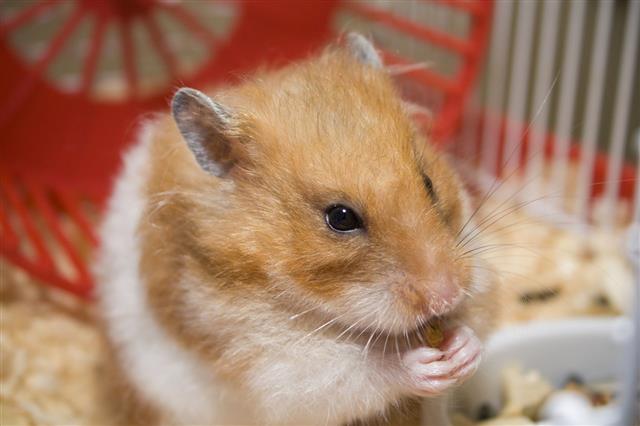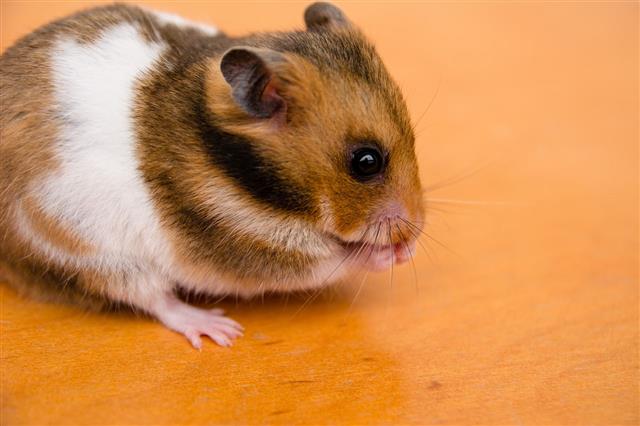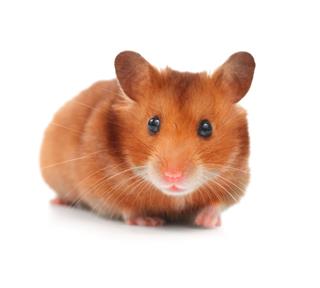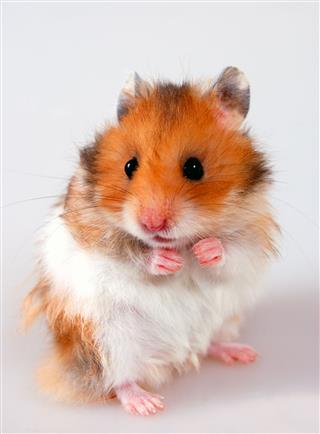
Keeping a cute hamster as a pet is a fun-filled experience. Hamsters make for very charming and lovable pets and give an unparalleled experience to their masters along with lots of lessons in life.
Hamsters, which belong to the rodent family, are one of the most popular pets found around the world. They are cute, clean and easy to take care of, which make them a favorite pet for people of all ages. They can be really entertaining companions for the keeper if proper care of their mood and diet is taken.
A pet hamster only lives up to 1000-1100 days, i.e., about 1-3.5 years. The time span varies slightly according to the particular species – Russian hamsters may live up to four years – but the rule of the thumb states that hamsters don’t live for much more than 2.5-3 years. While this can be really heartbreaking, especially for youngsters, a few people think of it as an opportunity for children to understand the inevitability of it and learn the responsibility.
Types of Hamsters
Syrian Hamsters
Syrian Hamsters are also called black bear, golden, teddy bear, fancy hamster, etc. They are generally golden brown in color with dark-colored markings on parts like jaws, cheeks, etc., of their body. They grow about 6-8 inches in length, and their lifespan is around 2-3 years.
Syrian hamsters are the largest of all the types and are very easy to tame and care for, which make them the most commonly adopted pets. They are strongly territorial animals and cannot tolerate the presence of other hamsters in their territory, which makes it very important to keep them alone in a cage/home. They are mainly nocturnal and are quite active from the early hours in the evening and night.
Dwarf Hamsters
They are also called Campbell’s Russian Hamsters, Winter White Russian Hamsters or Roborovski Hamsters. Dwarf Campbell’s Russian Hamsters are the most common type people like to keep as a pet. They grow about 4-5 inches in length and have almost the same lifespan as other types of hamsters. They prove to be good mates for hamsters of the same species rather than other species (given that they are introduced to each other at a young age).
Chinese Hamsters
These types are often misinterpreted to be dwarf hamsters as they exhibit similar physical characteristics like them, but they are actually different. They grow same in length as dwarf hamsters, and have a lifespan of about 2.5 to 3 years. They are also nocturnal but are not as lazy as Syrian hamsters during the daytime. Female Chinese hamsters generally are not comfortable with the other hamsters and so should be kept alone or with the hamster they get along with easily.
Ideal Homes for a Hamster
First and the most important thing to take into consideration is that a hamster’s house should be as large as possible, with a dry and hygienic bedding. Hamsters can easily contract diseases from an unhealthy environment, so the cage must be regularly cleaned.
Avoid choosing a wooden house for hamsters as it cannot withstand their teeth (they have sharp incisors that never stop growing), and might nibble their way out.
There are many varieties of cages/homes available in the market like simple wire cages, large cages, with bedding, wheels, and tunnels, etc. There should be plenty of space available for your pet hamster to gambol around. If you are not planning to let the hamster free in your house, its cage must have a running wheel.
The hamster should be equipped with be a bowl where you can keep food, a small metal water dispenser and some space for the hamster’s bedding. Provide it with some tissue papers (chemical-less or non-scented), straw, softened wood shavings, etc.
Hamsters are not designed to curl up in a cozy spot and sleep off half the day; they are designed to be mobile and active. It has been speculated that not providing a hamster enough exercise heavily increases the chances of it becoming paralyzed. An underworked and overfed hamster will also become bored quite easily and may display behavioral changes.
Food for Hamsters
Hamsters can eat a variety of foods which you will never find hard to get hold of. They can eat vegetables, such as cabbage, carrots, cauliflower, cucumbers etc., fruits, such as grapes, apples etc., cereals, seeds, raisins and even worms. Nowadays, you can choose from a variety of food mixes. These food mixes are prepared using corn, sunflower seeds, cereal, alfalfa etc., which hamsters happily devour.
Hamsters require fresh foods. But remember it should not be given a mixture of different foods. If you put everything in the food plate, chances are your pet hamster will eat only those items which it likes, cultivating the taste for them and may reject other foods in the future. Note down the daily food habit of your pet, this will help you feed it in the right way and monitor any unusual activity.
Handling Hamsters
Hamsters’ popularity as household pets owes much to their cuddly nature and their ‘oh-so-cute’ appeal. Although very easy to tame, they need special handling until then. Initially, you may need to use a glove to pick up an untrained hamster, since it may bite. As stated before, their teeth can burrow through wooden cages, so a bite can be excruciatingly painful.
You should be careful not to stress or frighten your pet hamster, as they often resort to their instinct to bite when under shock/stress or frightened. You will also have to learn how to hold your pet without making it feel uncomfortable in your hands. Once tamed, however, it will come to recognize you, and will allow you to feed and pet it.
If you are planning to set your pet hamster free inside your home even for a small amount of time, it can easily be trod on by someone or might get into some hiding hole from where you will find it very hard to retrieve it, so make sure it is only left free when you (or someone else) can keep an eye on it. Make sure that your hamster gets enough space to play and run in order to meet its daily exercise requirements, it should get enough privacy, there should be no harmful element (such as electric wires, any harmful chemical, anything that might cause cuts or scratches) within its reach and its home should be kept very hygienic.
What if Your Pet Escapes
If you suddenly find out that the door of the hamster’s cage had been inadvertently left open and that the poor animal is now nowhere to be seen, all you can do is to set a tempting trap and wait. Provided it hasn’t left your house, you can usually lure it back with its favorite food.



















